If you’re planning a trip to Argentina and wondering what to eat beyond steak and Malbec, this food guide is for you!
The truth is, Argentine food can feel overwhelming at first glance. You sit down at a parrilla and suddenly you’re staring at a list of cuts you’ve never heard of, regional empanada styles you didn’t know existed, and stews whose names don’t give away what’s inside. On top of that, there are all the pastries, pastas, Andean dishes, and Patagonian specialties that rarely make it onto basic “what to eat in Argentina” lists.
Well, I’ve not only lived in Argentina, but also spent months travelling the length of the country, so this blog post is basically the greatest hits playlist of everything I’d recommend to friends. I’ll walk you through classic Argentine dishes, regional comfort foods, vegetarian-friendly options, desserts, and drinks, with plenty of ideas you can look out for on menus, food tours, and local markets.
This is your handy checklist of foods to try in Argentina so you don’t leave thinking, “I wish I’d known about that.” You won’t be able to try everything in one trip (though you’re welcome to try!), but with this guide in hand, you’ll know exactly which dishes to hunt down.
Argentine Breakfast Pastries & Baked Goods
Mornings in Argentina start with something sweet. Locals usually pair a coffee with either a pastry or bread slathered in dulce de leche, so if you have a sweet tooth, you’ll be pleased by all the options.
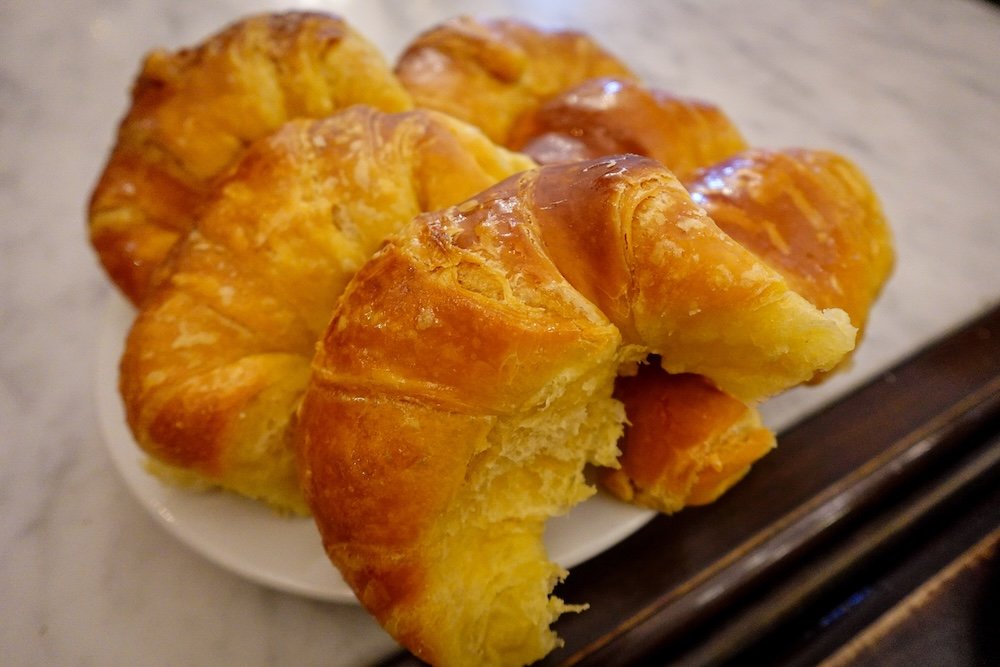

Medialunas
Medialunas are these sweet croissants that are smaller and plumper than their French cousins. They are a staple of an Argentine breakfast and my favourite way to start the day! You can order them “de manteca” (buttery) or “de grasa” (made with lard). I have a preference for the sweet kind, but it’s worth trying both. Find a café that serves café con leche with a side of 3 medialunas and you’re golden!
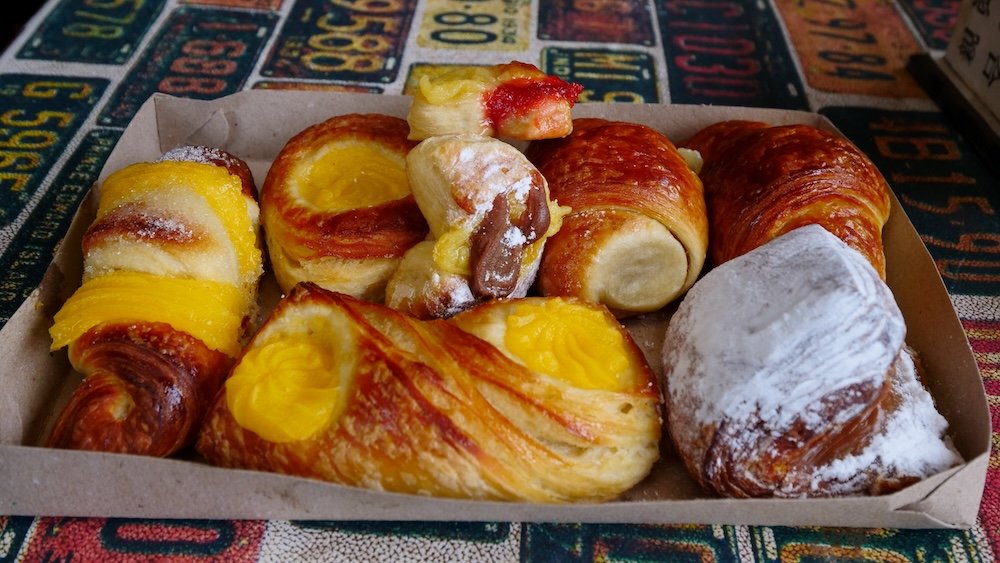
Facturas
Facturas is an umbrella term for a wide variety of pastries topped with cream, dulce de leche, or jam. You can have them at breakfast or during your midafternoon snack, known as merienda. Some of my favourites are cañoncitos, or little cannons, stuffed with dulce de leche; the rejillas, topped with quince jam; and moñitos, which are bow-shaped and have custard on one side and quince on the other.

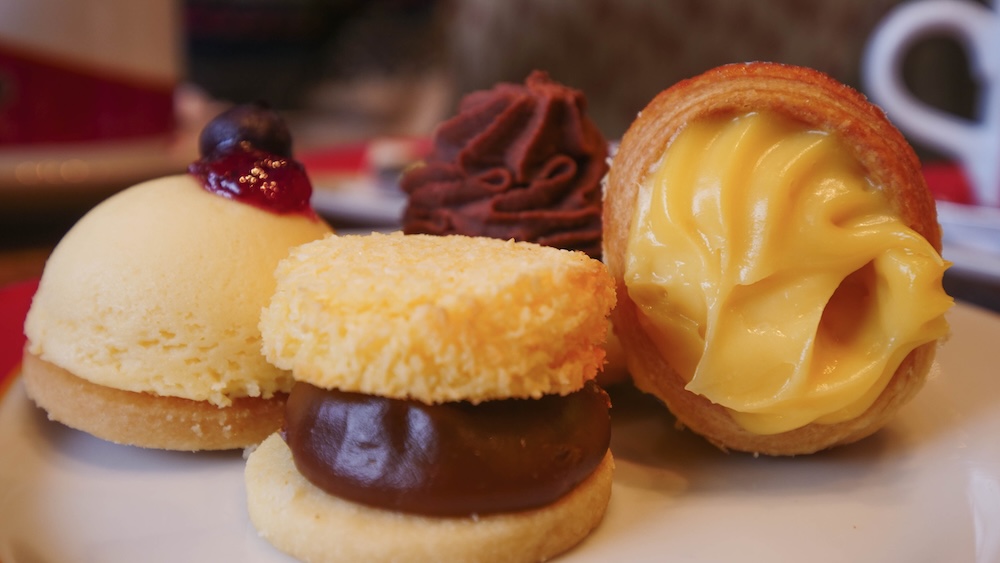
Masas finas
Masas finas are these beautiful bite-sized pastries, often filled with dulce de leche, fruit jam, or chocolate ganache. You can buy them by the weight, and it’s what I like to bring if I’m invited to a birthday, afternoon tea, or family gathering. They are always a hit!

Alfajores
Alfajores are another Argentine food to try, especially if you have a sweet tooth! This sweet treat consists of two soft sandwich cookies filled with dulce de leche and coated in chocolate. There are endless variations across the country; where we live in the Province of Cordoba, jam-filled alfajores covered in a sugar glaze are the local specialty.
Tortas fritas
Tortas fritas are a roadside staple and consist of plain fried dough pastries that you can enjoy with mate. Think of it as a salty donut. I first tried these in Patagonia on our Seven Lakes tour; I remember it was cold, I was hungry, and I lined up with tourists for a fried treat that raised my spirits.
Bizcochitos de grasa
Bizcochitos de grasa are these small savoury pastries made with lard. In Cordoba Province, we call them criollitos and they are layered, so you can pull them apart as you eat them. You can enjoy them alongside your morning coffee or with mate.
Pastelitos
Pastelitos are layered pastries filled with either quince paste (membrillo) or batata (sweet potato) and dipped in syrup. Personally, I’m on team batata, but it’s worth trying both. These pastries are traditionally eaten on national holidays like 25 de Mayo, to commemorate the May Revolution.
Budín
Budín is a sweet loaf cake that is served at breakfast or for merienda as an afternoon snack. It can be in various flavours like vanilla, lemon or chocolate marble known as marmolado. Sometimes it has a sugar or chocolate glaze on top, and it goes great with coffee.
Pan casero
Another food item you’re bound to come across at your local bakery or corner store is pan casero or pan de campo. This is a rustic country bread that is perfect for slathering jams or soft cheese. This is another option for a sweet breakfast.
Dulce de leche
Have you even travelled to Argentina if you haven’t tried dulce de leche? This caramel-like spread is Argentina’s pride and makes an appearance in almost every dessert. You can spread it on bread, add a dollop to your ice cream, use it as a cake filling, or just eat it by the spoonful; the latter is precisely what happened when I first introduced my in-laws to dulce de leche!
Argentine Snacks, Street Food & Picadas
Mid-day hunger in Argentina usually means grabbing a quick sandwich, sharing a picada, or stopping by a street stand.
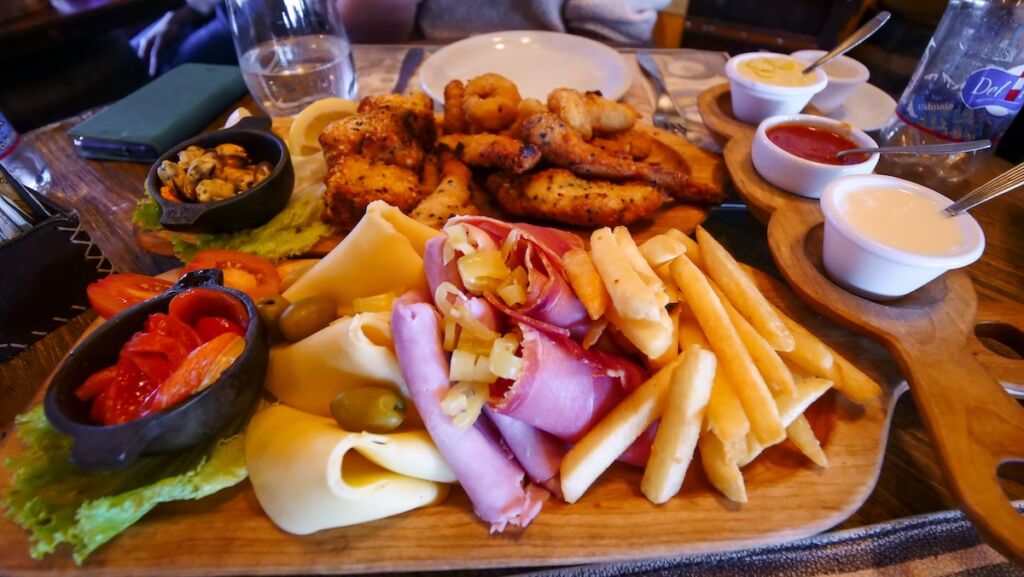
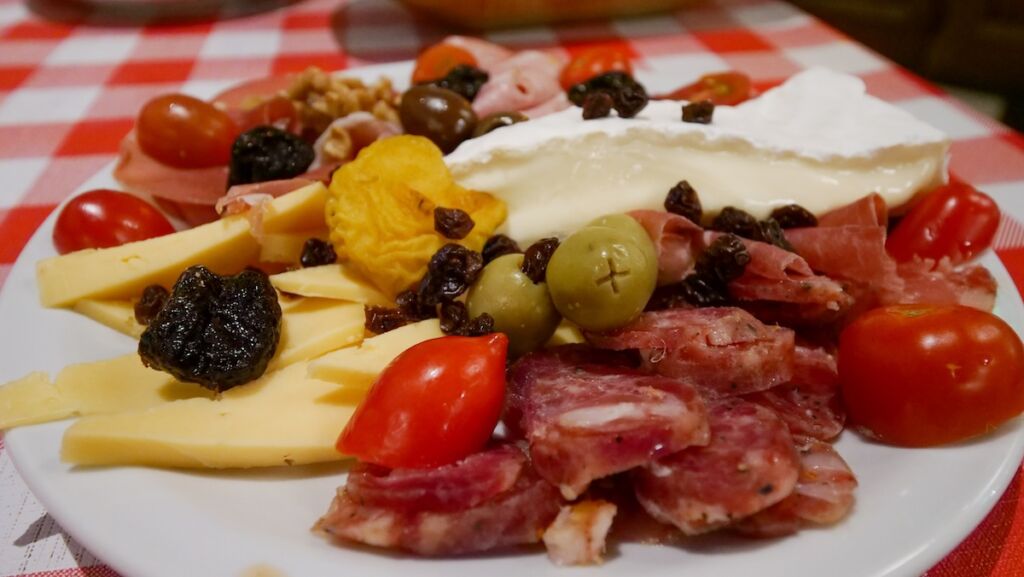
Picada
Picada isn’t one particular dish, but rather, an assorted snacking platter with cheeses, cured meats, olives, peanuts, bread and anything else you want to get creative with. I like to have this as a light dinner option, and it’s something that you can actually order in many restaurants, not just make at home.
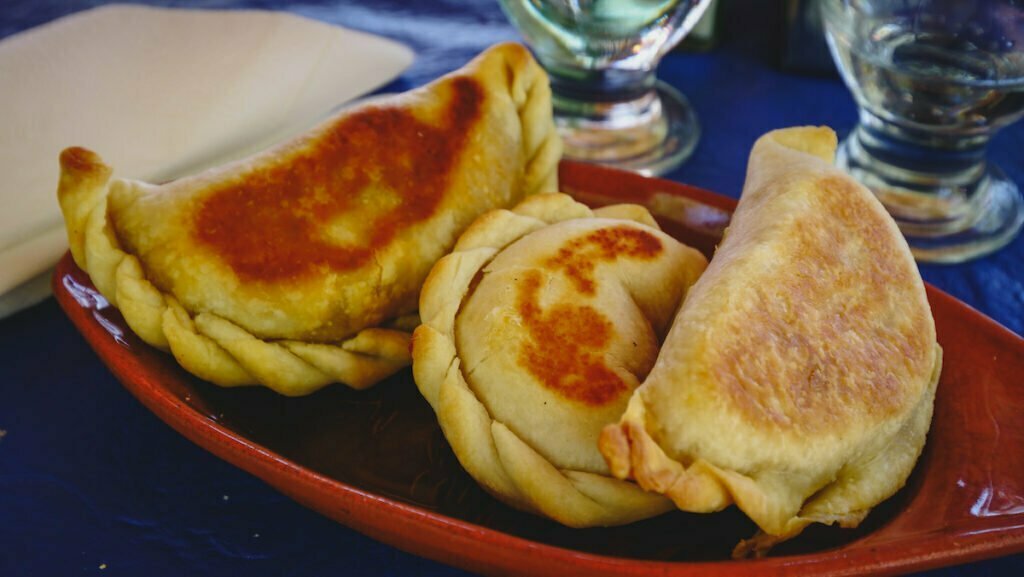

Empanadas
Empanadas are a must-try food in Argentina, and they are something you will find on almost every restaurant menu! They are stuffed savoury pastries that can be either baked or fried, and their fillings vary regionally. Beef empanadas are a classic, but keep an eye out for humita (corn), jamón y queso (ham and cheese), and capresa (mozzarella, tomatoes and basil). My favourite empanadas are the beef ones sweetened with raisins, and I also think frying them elevates the flavour!

Lomito
Lomito is a thin tenderloin steak sandwich that is piled high with lettuce, tomato, ham, cheese, and a fried egg on fluffy bread that can absorb all the juices. The end result is a sky-high sandwich that is a little tricky to bite into! It’s especially popular in Córdoba, and that’s where I tried it for the first time.
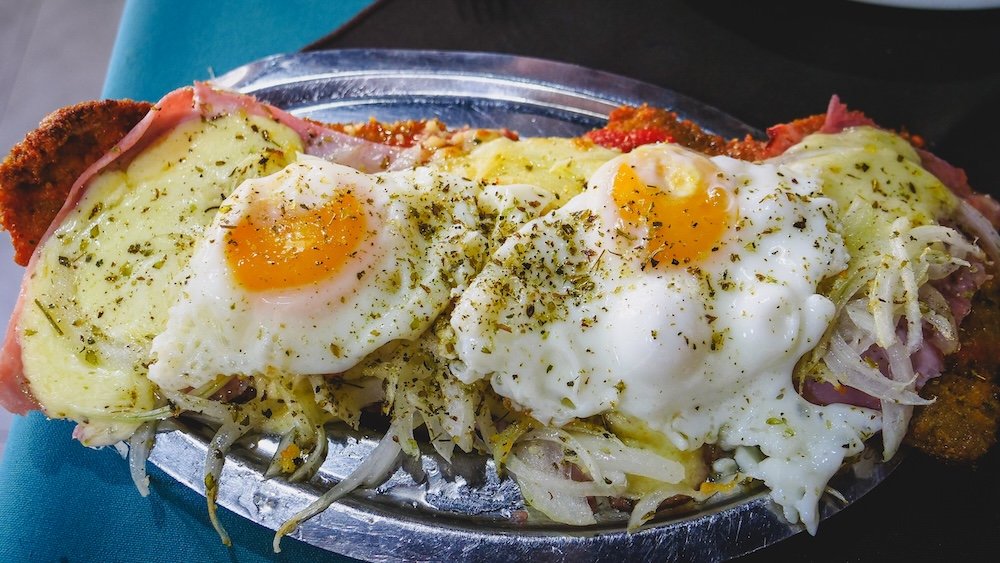
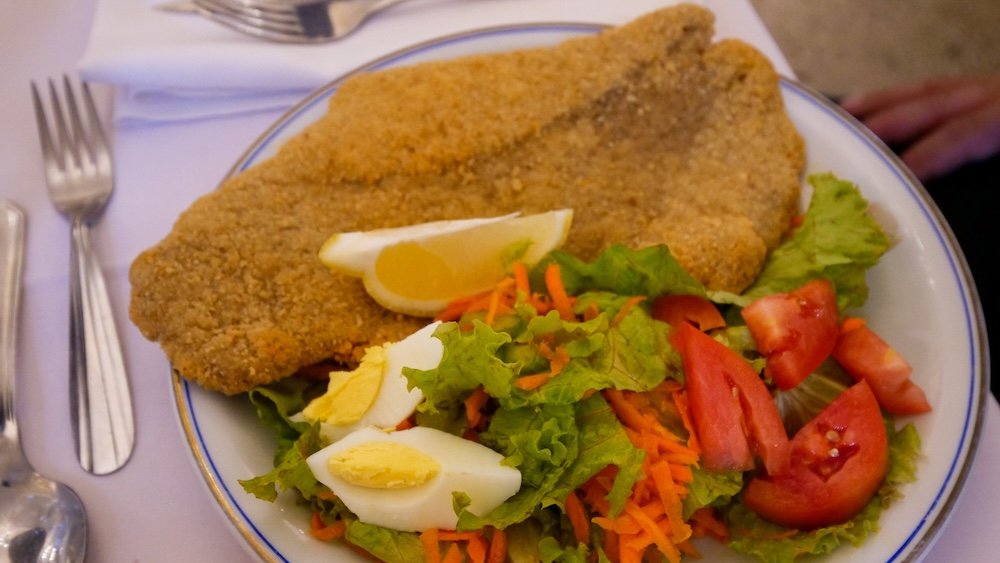
Milanesa
The milanesa is Argentina’s version of a schnitzel. It is a breaded, fried cutlet usually made from veal. It’s served with a side of mashed potatoes, fries, or tucked into a sandwich.

Suprema de Pollo
The suprema de pollo is a chicken breast lightly breaded and fried until golden, and it’s an alternative to the country’s beloved milanesa. I personally prefer the chicken milanesa and it’s my go-to order when I eat at a bodegón.
Sánguche de milanesa
The milanesa sandwich is a really popular lunch on the go. You’re basically just taking the classic milanesa and slapping it inside a bun with a bit of mayonnaise. I often see it for sale at empanada shops or corner stores.
Papas fritas a caballo
Papas fritas al caballo is a plate of French fries topped with two fried eggs. Anytime that you see al caballo on the menu, it means ‘on horseback’ and it refers to two fried eggs on top. It’s something that makes an appearance on many dishes, from fries to steaks to milanesas.


Pizza
I know, I know, you’re going to tell me pizza is Italian, but think about all the Italian immigration to Argentina! All you have to do is walk down Avenida Corrientes and you’re going to stumble upon one pizzeria after the next. The best part is that most pizzerias have a selection that you can order by the slice, so you can try all sorts of toppings! I’m a big fan of the cheeseless pizza con anchoas, which only has tomato sauce and anchovies.
Fugazza / Fugazetta
Since we’re on the topic of pizza, I also want to mention two types of pizza that have been popularized in Argentina. Fugazza is the Genoese word for focaccia, and it consists of a cheeseless dough topped with onions. Then, you have the fugazetta, which takes the fugazza and stuffs it with copious amounts of cheese.
Fainá
Continuing with the pizza talk, I can’t skip over fainá, which is not pizza, but it is eaten with pizza! This is a chickpea flatbread that is typically served on top of a pizza slice. It’s a quirky but beloved combo that is often sliced into random shapes; I’ve never understood why it’s not sliced into the perfect pizza triangle, but I digress.
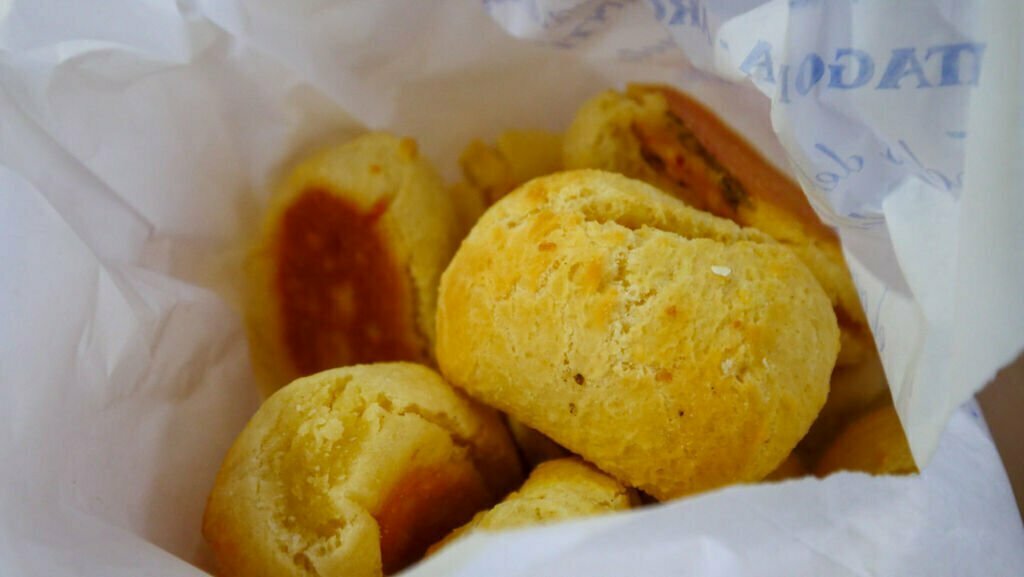
Chipá
Chipá is technically from Paraguay, but it’s so popular in Argentina that you can buy it in any bakery. It is a cheese bread that uses mandioca or cassava flour, which gives the dough a nice chewiness. I usually buy a dozen of these when I’m out running errands in town, and sometimes I finish the whole thing before I get home. They are so good, it’s hard to stop!
Argentine Meat & Parrilla Classics
If Argentina has a religion, it’s asado. Grilling meat is an art form, and sitting around the parrilla with friends and family is a ritual.
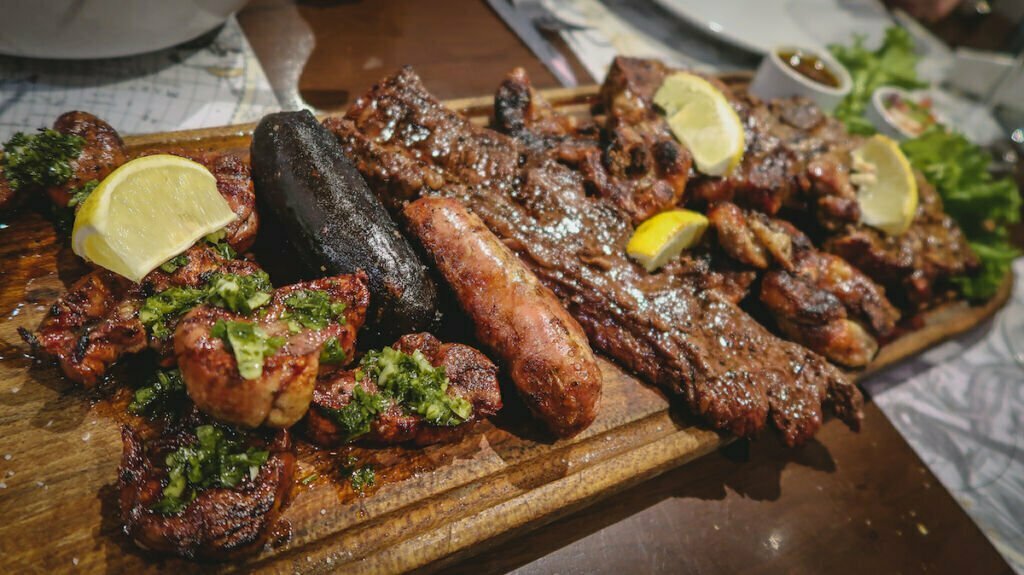
Asado
Asado is an Argentine barbecue featuring a wide variety of grilled meat. However, it’s important to note that it’s not just about the food; this is an experience meant to be shared with family and friends, and it’s a social event that can last the better part of the day. Some classic Argentine cuts of meat to look out for include bife de chorizo (strip steak), lomo (tenderloin), entraña (skirt steak), and tira de asado (ribs).
Provoleta
Why am I including cheese in the BBQ section? Because it’s a quintessential part of the asado experience! At an Argentine asado, you’ll notice a small cast-iron pan that fits a thick, round slice of provoleta cheese. It’s served as an appetizer, all melted and gooey with a little sprinkling of dry oregano.
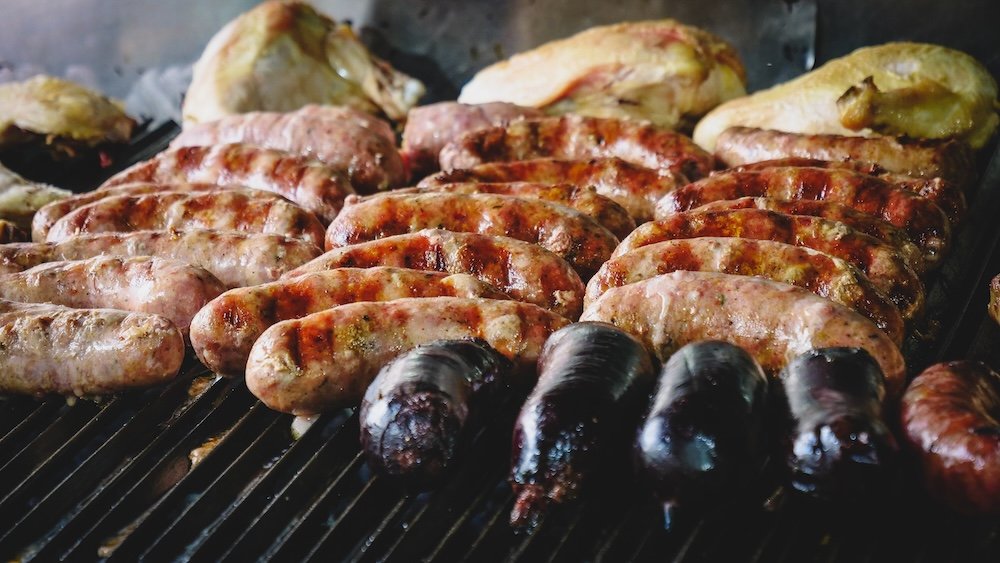
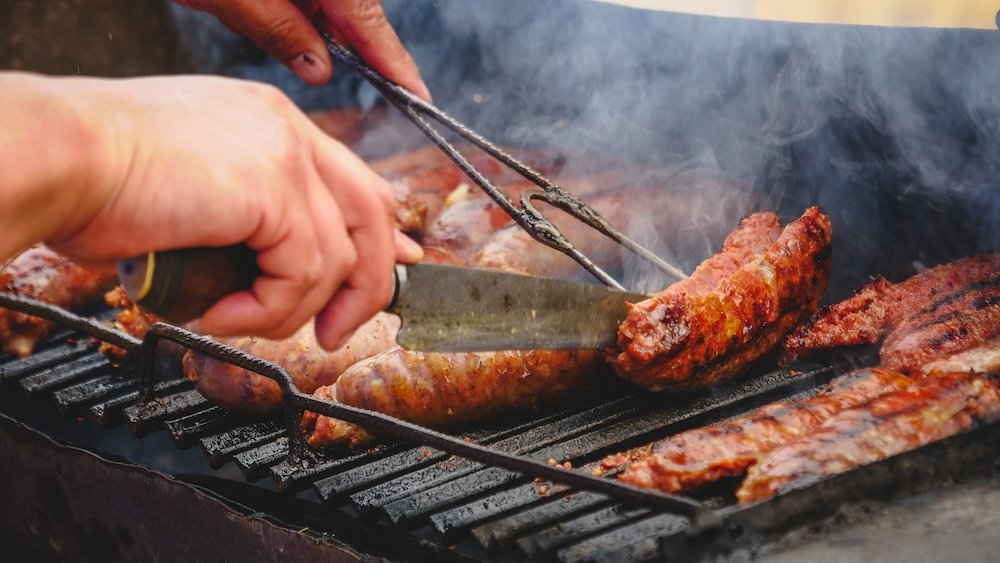
Choripán
A choripán consists of a chorizo on a bun topped with chimichurri, and it’s a crucial part of an Argentine asado. This is what you typically eat first, while the other cuts of meat cook slowly. It can also be a meal in and of itself. In Buenos Aires, you can find food trucks along the Costanera that serve up choripán, and it’s the perfect meal on the go.
Morcilla
Morcilla is one of those divisive Argentine foods that people either love or hate. It’s a blood sausage, usually served early in the asado. You typically take the filling and spread it on bread. I used to love eating this as a child, but it’s different once you know the ingredient!
Mollejas
Mollejas are another divisive food item that appears in an Argentine BBQ. These are the sweetbreads, which are grilled until golden and served with a squeeze of lemon juice.
Chinchulines
Chinchulines are grilled small intestines, and again, it’s one of those foods that some people love and others refuse to try. They are cooked until crispy.
Matambre
Matambre is a very thin cut of meat, similar to the flank steak. You’ll often see it served as matambre arrollado, where it is rolled with vegetables and eggs, and then boiled or roasted. The name matambre means “hunger killer”.
Bondiola
Bondiola refers to pork shoulder, slow-cooked over coals, and it’s often served in a sandwich. It’s a popular street food snack that rivals the choripán, and as such, it is nicknamed the bondipán.
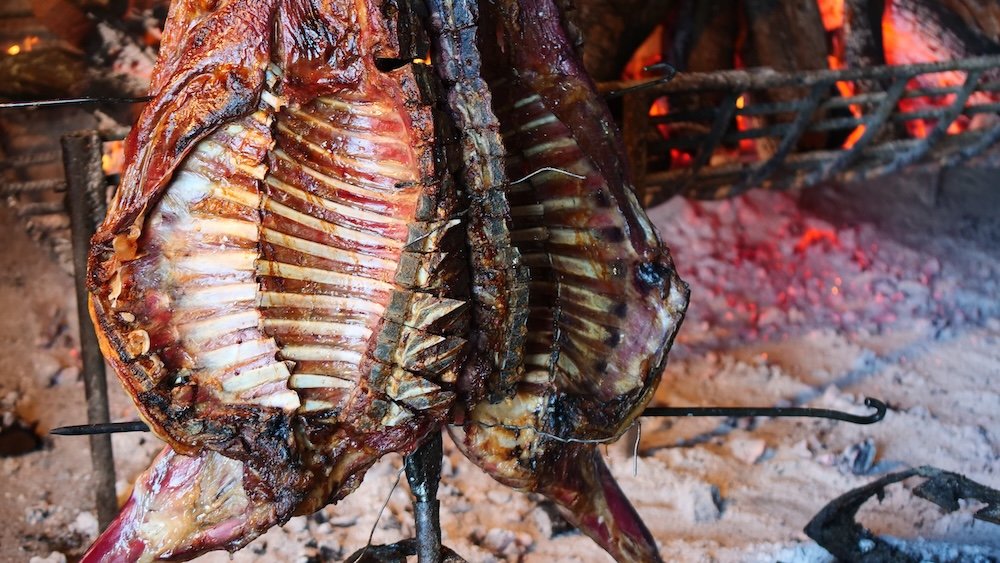
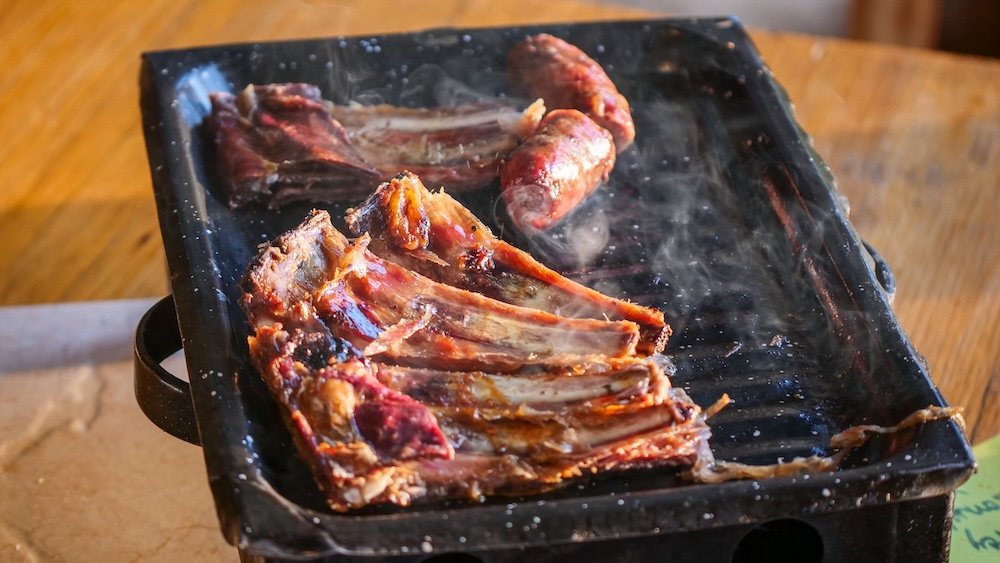
Cordero patagónico
Cordero patagónico is slow-roasted Patagonian lamb cooked over an open fire, and it is especially famous in southern Patagonia. This is a dish that you’re going to encounter over and over again. Many restaurants will have a Sunday BBQ where they serve Patagonian lamb, and we also had this when we did an estancia stay at Tecka Lodge.
Chivito / Cabrito
Chivito or cabrito refers to goat meat, and it is especially popular in Córdoba and Cuyo. It’s grilled on the stake over an open fire, much like the Patagonian lamb. This is something you’ll encounter if you’re invited to a family barbecue.
Llama meat
Llama meat is a food that’s a bit more common in the northwest part of the country (think Salta and Jujuy). Locally known as carne de llama, the meat is very lean and often served as steaks, skewers or in stews.
Pollo al disco
Pollo al disco translates to ‘chicken in the disc’ and it’s a dish where the chicken is cooked in a plough-disk pan. It’s a dish that has its roots in the rural areas of Buenos Aires province, where using agricultural equipment for cooking was convenient!
Chimichurri
Lastly, all of this meat is served with a spoonful of chimichurri. This is a type of meat dressing made with parsley, chilli peppers, minced garlic, olive oil, oregano, and vinegar. You’ll often find a little plate or jar with this sauce at the table.
Salsa criolla
Like chimichurri, salsa criolla also makes an appearance at any barbecue meal. It consists of chopped tomatoes, onions and red peppers with olive oil and vinegar. You may be inclined to compare it to a pico de gallo, but it’s not quite the same. I usually eat it with bread before the meat even arrives, though technically it’s meant to go with the meat.
Tip: If you want to delve deeper into Argentina’s asado culture, you need to attend the Fiesta Nacional del Asado or the National BBQ Fest, held in Cholila!
Traditional Argentine Stews & Andean Dishes
Hearty stews and casseroles are quite abundant in Argentine cuisine and especially popular during the cooler winter months.

Guiso de lentejas
When it comes to traditional Argentine food from the northern part of the country, guiso de lentejas is my absolute favourite! This is a lentil stew with chorizo and bacon, and it is typically served in a clay pot. It’s a very hearty and filling meal, especially during the cooler months, though I’m perfectly happy to eat it year-round!
Puchero
Puchero is a stew that combines an assortment of meats (beef, chicken, sausage, bone marrow) and vegetables (potatoes, sweet potato, carrots, corn, onions). This is comfort food at its finest, and it’s served once the temperatures start to drop.
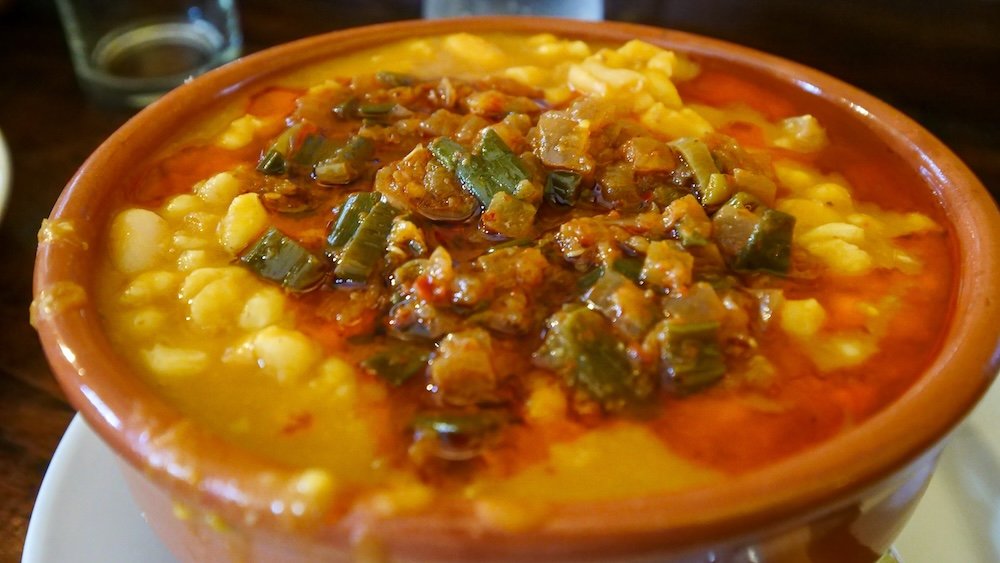
Locro
Locro is a corn, meat, bean and vegetable stew that’s eaten on national holidays. No two locro recipes are the same, but most traditional recipes include a combination of sausage, bacon, tripe, and pig feet! Locro is a dish you can find year-round in the northern provinces, but you can also try it in Buenos Aires if you go to a restaurant that specializes in northern dishes.
Carbonada criolla
Carbonada criolla is a type of beef stew made with corn, squash, and dried fruit, which adds a little bit of sweetness to the dish. The traditional way to serve this dish is in a baked pumpkin, though you can also get it in a clay pot.

Guiso de cazador
Guiso de cazador is a hunter’s stew and it’s eaten a lot in Patagonia. The dish features tender chunks of venison simmered slowly with vegetables, red wine, and herbs.
Guiso de jabalí
Guiso de jabalí is a Patagonian stew made with wild boar. It is slow-cooked, blending the meat with red wine, root vegetables, and local herbs. It’s earthy, hearty, and a favourite in mountain lodges during the colder months.

Tamales
Tamales can be found across Latin America, so they are not uniquely Argentine, however, they are eaten in the northwestern part of the country. The dish consists of corn flour stuffed with meat and steamed in a corn husk.
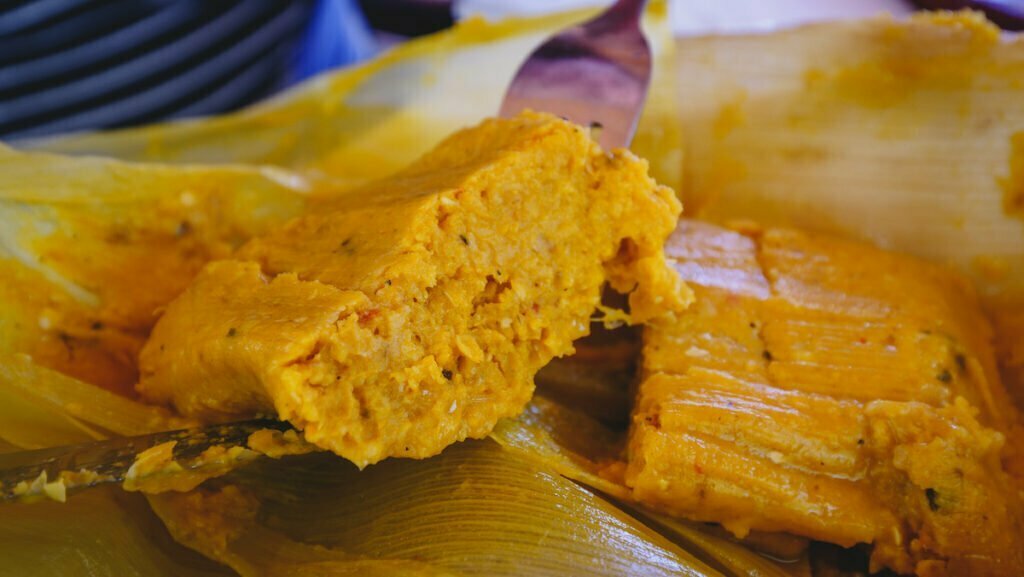
Humita
Then you have the humita, which is similar to the tamal, but not quite the same. The humita is made with fresh corn that’s blended into a paste. It is also wrapped in a corn husk (humitas en chala), and it either has a cheese filling or no filling at all.
Polenta
Another Argentine food to try is polenta! The dish consists of cornmeal that is either cooked soft or firm, and topped with tomato sauce and cheese. I prefer it soft so that I can eat it with a spoon. I loved eating it as a kid, and I love eating it now. They sell instant polenta at the supermarkets, so it’s something that you can buy and make yourself.
Pastel de papa
Pastel de papa is a potato pie, similar to shepherd’s pie. It consists of a seasoned ground beef layer on the bottom and a mashed potato layer on top (though in my family, we do potato-meat-potato so that it holds its shape better). It’s a classic baked casserole dish for the winter months when your body is craving something warm and filling.
Tarta Pascualina / Tarta de Acelga
If you enjoy savoury tarts, you’ll want to try tarta pascualina. This tart has Swiss chard, eggs, onions and ricotta. It’s especially popular for Easter, though at my house, we eat it year-round.
Argentine Pasta & Italian-Inspired Dishes
Thanks to waves of Italian immigration, pasta has become a Sunday tradition in many Argentine households. It’s hearty, comforting, and often smothered in tuco, a tomato and meat sauce.
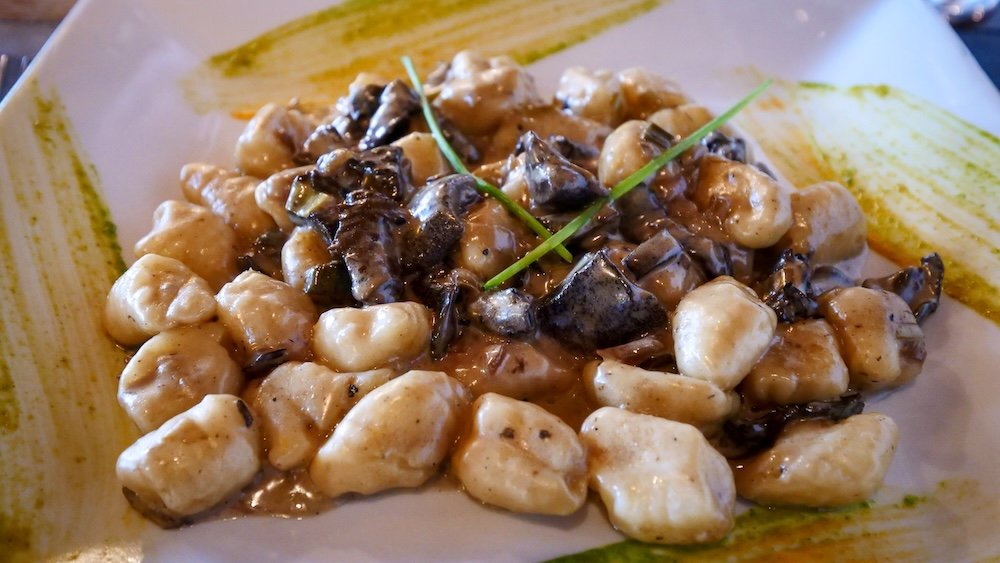
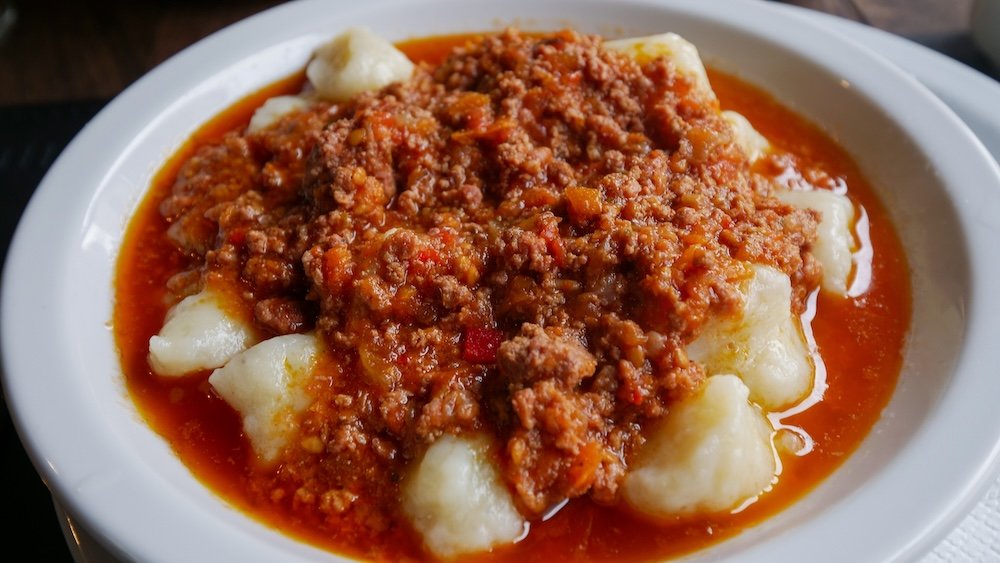
Ñoquis
Ñoquis or gnocchi is a pasta-like dumpling, and in Argentina, it is typically eaten on the 29th of each month for good luck. Fun fact: ñoqui is also a slang term for an Argentine government worker who receives a monthly wage but performs little to no work. They are called ñoquis because they show up on the 29th to collect their paychecks!
Sorrentinos
This is one dish where you can see the influence of Italian immigration in Argentina, particularly from Sorrento. A sorrentino is a round pasta, similar to a ravioli, and it is stuffed with ham and cheese. It’s one of the more popular pasta dishes you’re likely to find on a menu.
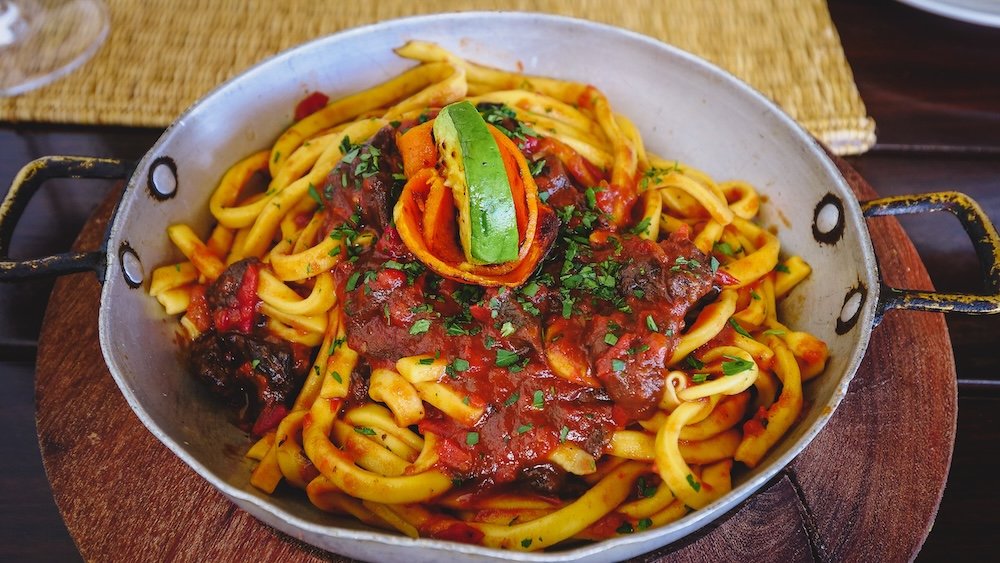
Fideos con tuco
Fideos or tallarines refer to noodles, and tuco to the rich tomato sauce that goes with them. When you order this dish, you’ll typically get spaghetti, linguine or fettuccine. Load them with a couple of spoonfuls of Parmesan cheese, and you’re set!
Canelones
Canelones are rolled pasta tubes that are filled with ricotta, spinach, or meat. In Argentina, you’ll often eat this dish with pancake rolls (think thin crepes) instead of the classic pasta tubes. It can be served with a tomato or bechamel sauce.
Argentine Seafood Dishes
Argentina isn’t well known for seafood, but Patagonia’s coast and lakes mean ample opportunity to try crab, trout, prawns and more!

Centolla
Centolla or king crab is a local specialty in Ushuaia. The meat is tender with a hint of sweetness, and it’s similar to lobster in terms of texture. My favourite way to eat centolla is al disco, meaning cooked in a plough or deep dish.
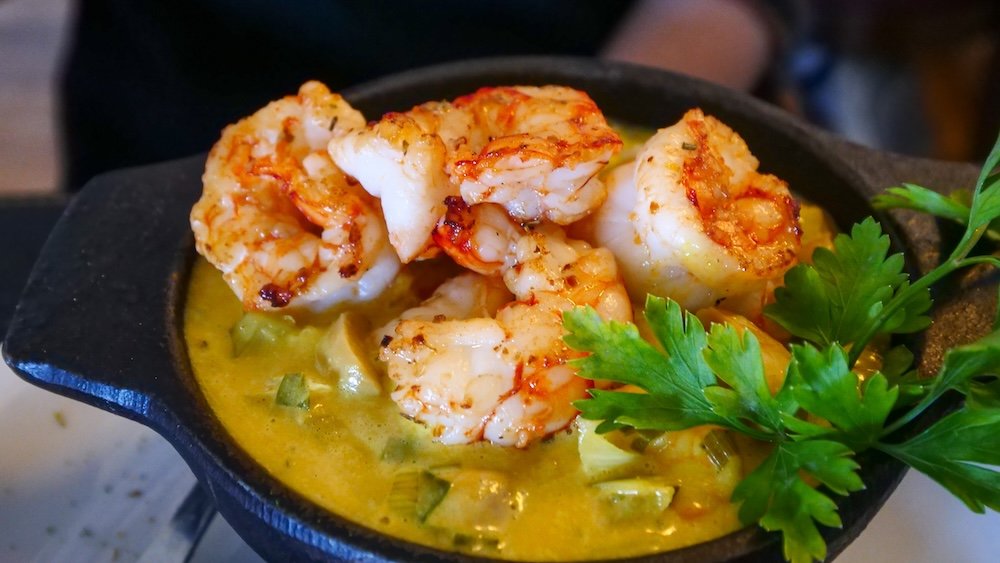
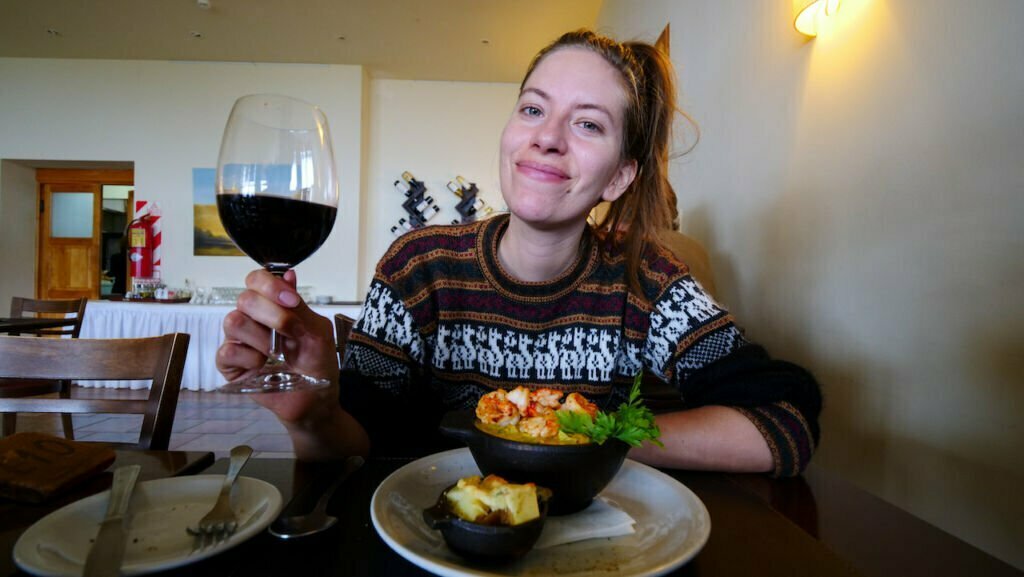
Cazuela de mariscos
Cazuela de mariscos is a seafood stew loaded with shrimp, mussels, and fish. This is a popular dish in coastal areas, and we had one of our best meals at a beachside restaurant in Comodoro Rivadavia. What I love about this dish is the variety of seafood packed into one single dish!

Rabas
Rabas are fried calamari rings, crunchy and perfect with lemon. It’s a dish that you can enjoy fresh in many coastal cities in Argentina. When I think of eating rabas, I picture the restaurant that sits on the Muelle de Pescadores in Mar del Plata. There’s just something about enjoying seafood on a pier with the fresh ocean breeze blowing in your hair.
Trucha
Patagonian trout or trucha thrives in Argentina’s crystal-clear mountain lakes and rivers. You can try it grilled simply with lemon or served in creamy sauces. I tried a trout dish with a creamy leek and almond sauce in Patagonia, and it was divine!
Argentine Desserts & Sweet Treats
When it comes to Argentine desserts, dulce de leche reigns supreme, plus you’ll find plenty of regional cakes, puddings, and frozen delights.

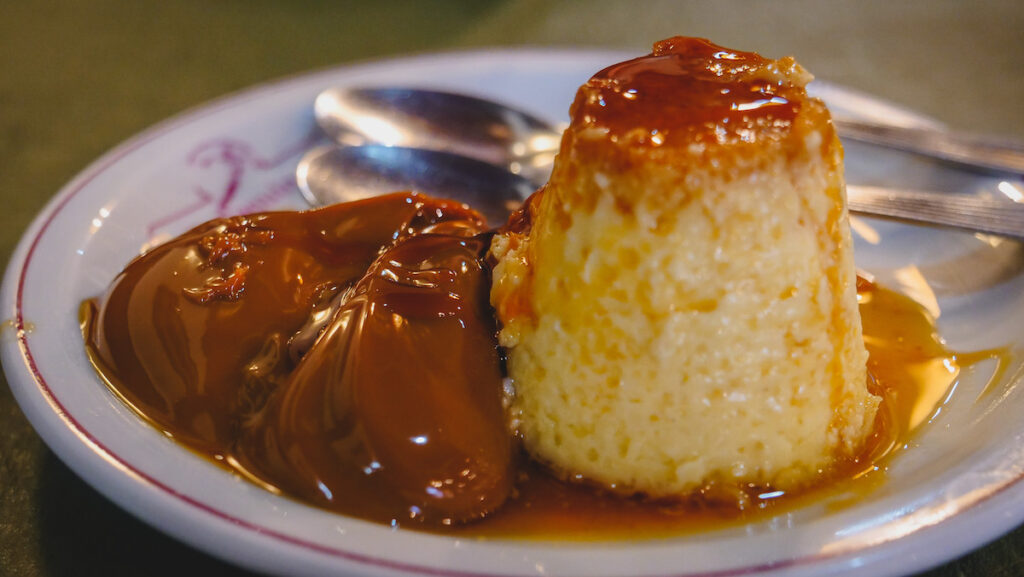
Flan
There is no Argentine dessert more iconic than flan! This silky custard is creamy and smooth, and in Argentina, it is served with dulce de leche, whipped cream, or both, known as flan mixto.
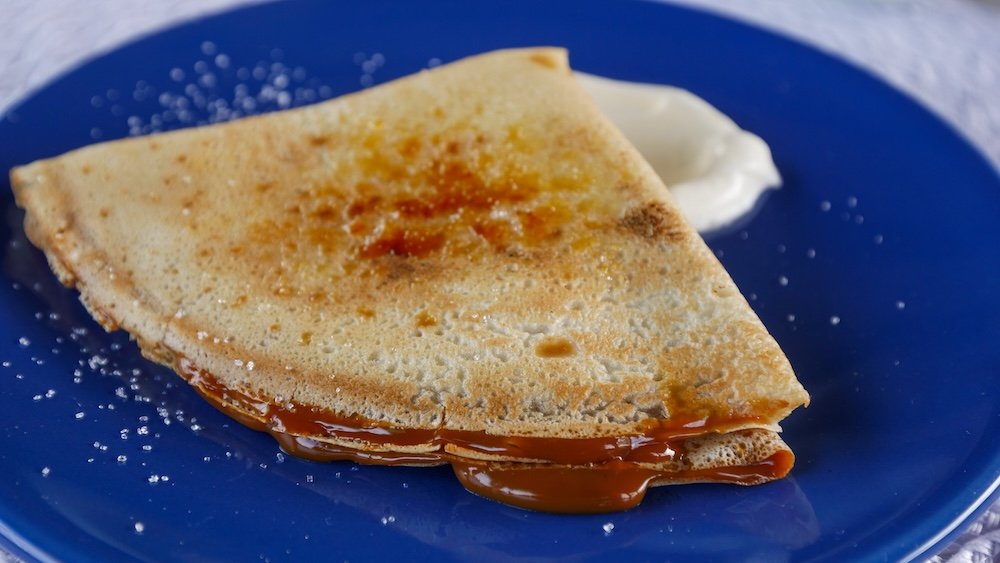
Panqueques con dulce de leche
Picture a thin crêpe stuffed with dulce the leche with a light dusting of icing sugar on top. You cut into it, and the caramel spread oozes out! This dessert is for those with a major sweet tooth, and it makes an appearance at almost every restaurant.
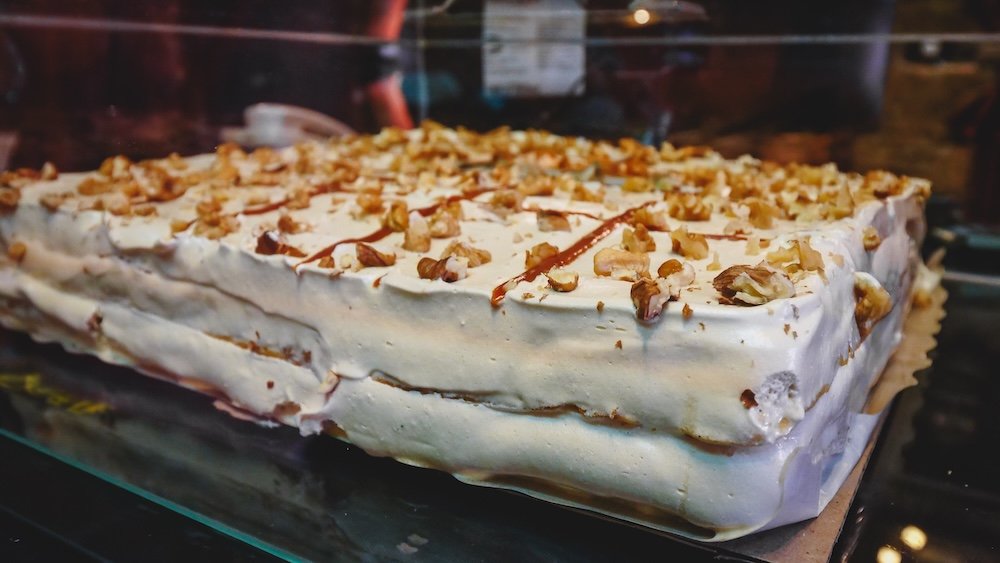
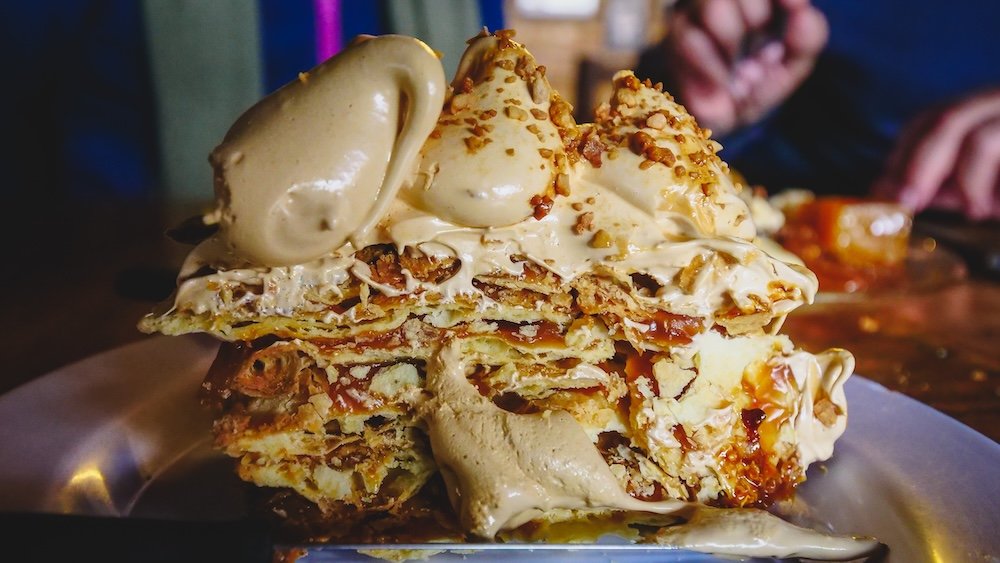
Torta Rogel
Torta Rogel is a mille-feuille cake with layers of crispy pastry with dulce de leche in between. The whole cake is then coated in meringue. It is very sweet, almost overwhelmingly so, so I would say this is one to share!
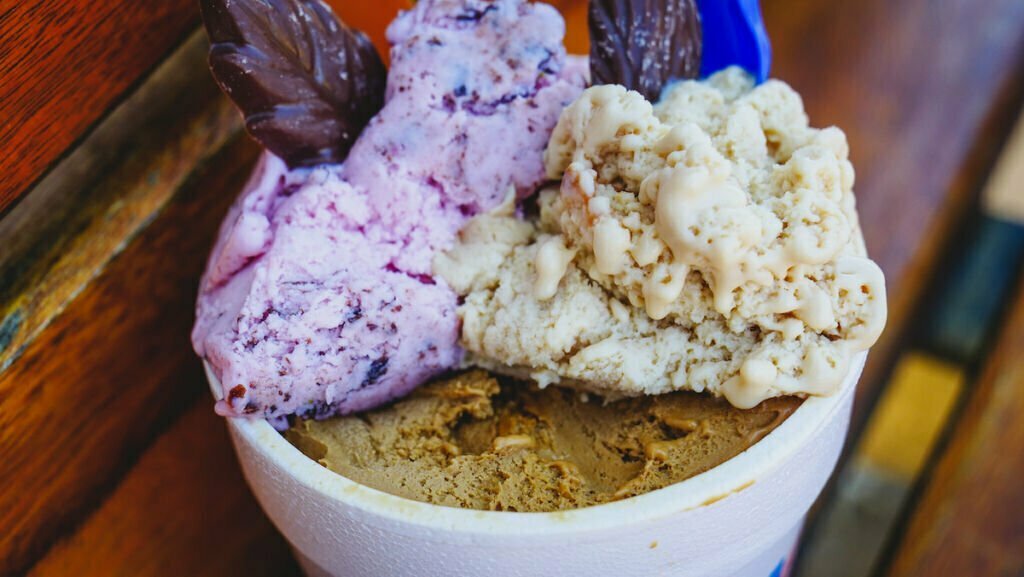
Helado artesanal
Argentina loves its ice cream, and excels when it comes to artisanal ice cream! I would suggest trying anything dulce de leche flavoured, as it’s what Argentina is best known for, and if you’re travelling in Patagonia, opt for a cream-based ice cream with frutos del bosque or forest berries.
Pasta frola
Pasta frola is a sweet tart made with quince paste and a lattice design on top. It can be enjoyed as a dessert or at merienda time. This is one of my favourite Argentine desserts; I like the crumbly dough and the tartness of the quince.
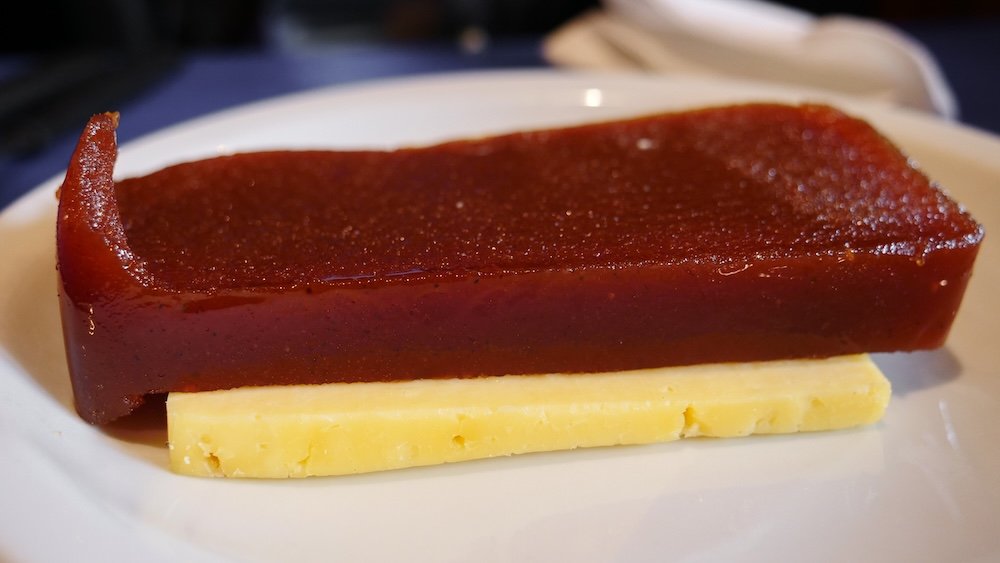
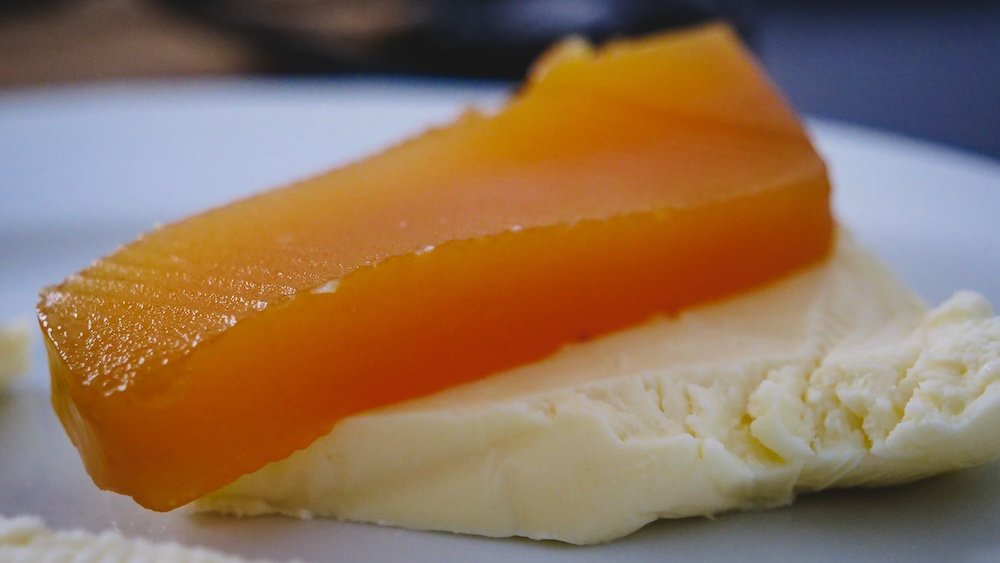
Postre Vigilante
Take a slice of quince paste and plop it on top of a slice of cheese and you have queso y dulce, also known as postre vigilante. It’s a super simple and traditional dish that involves no effort to serve, and it’s a classic that appears in most bodegón restaurants. You can also get a variation with sweet potato paste.
Arroz con leche
Arroz con leche is a dish that was brought over to Argentina during Spanish colonization, but it’s become a part of Argentina’s culinary identity. It is a creamy milk and rice pudding dusted with cinnamon. I really like the variety with orange zest.
Mazamorra
Mazamorra is another traditional Argentine dish that is eaten during national holidays, and it is a pudding made with white maize, water, sugar, and vanilla. Sometimes, it’s served together with arroz con leche.
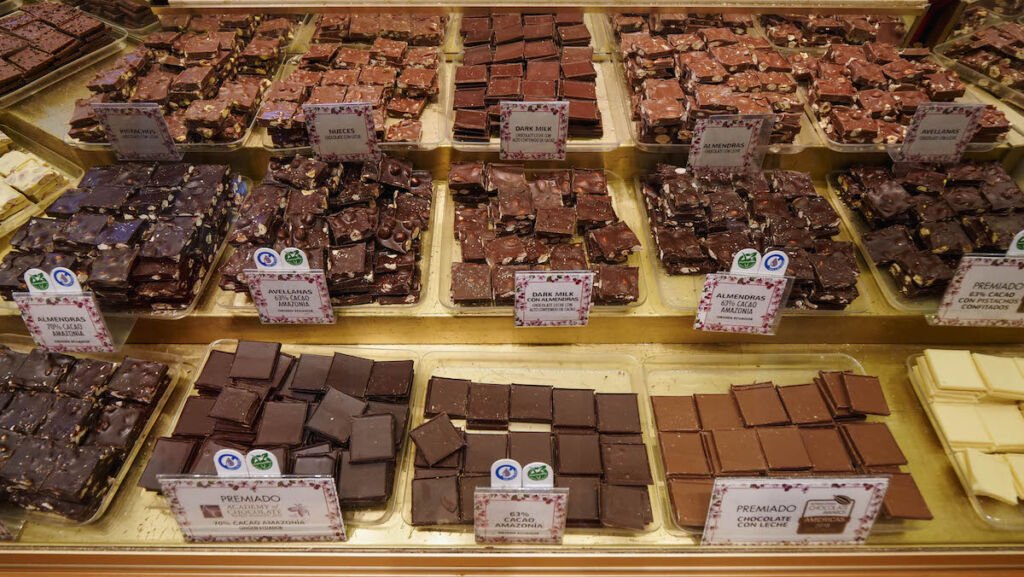

Chocolate artesanal
Artisanal chocolate is a big deal in Patagonia, and just to give you an example, in Bariloche, you can’t go more than a few blocks without coming across a chocolatería. The best part is that you can buy chocolate by the weight, so you can go into a chocolate shop, choose the box size you want, and then get an assortment of flavours. Some of my favourites include milk chocolate with cereal, coconut, and raspberry.

Torta Negra
Torta negra is a dark, dense Welsh cake made with dried fruits, spices, and a touch of brandy. It is eaten in areas with Welsh heritage, such as Gaiman and Trevelin, and pairs perfectly with afternoon tea.
Mantecol
Mantecol is a soft peanut nougat that is popular around the holidays. In terms of flavour, it’s somewhere between halva and peanut butter, and it comes in a candy bar shape.
Pan dulce
Pan dulce, also known as panetón, is a type of sweet bread with candied fruits that is typically eaten around the Christmas holidays. It was originally brought over from Italy, where it is known as panettone, by Lombard immigrants. I’m not really a huge fan of the candied fruit variety, however, I do like the version with chocolate chips!
Turrón
Turrón is another holiday favourite in Argentina. This is a nougat confection made with honey, sugar, egg whites, and toasted almonds. I find that it can be quite chewy, so eat it with care, especially if you have fillings!
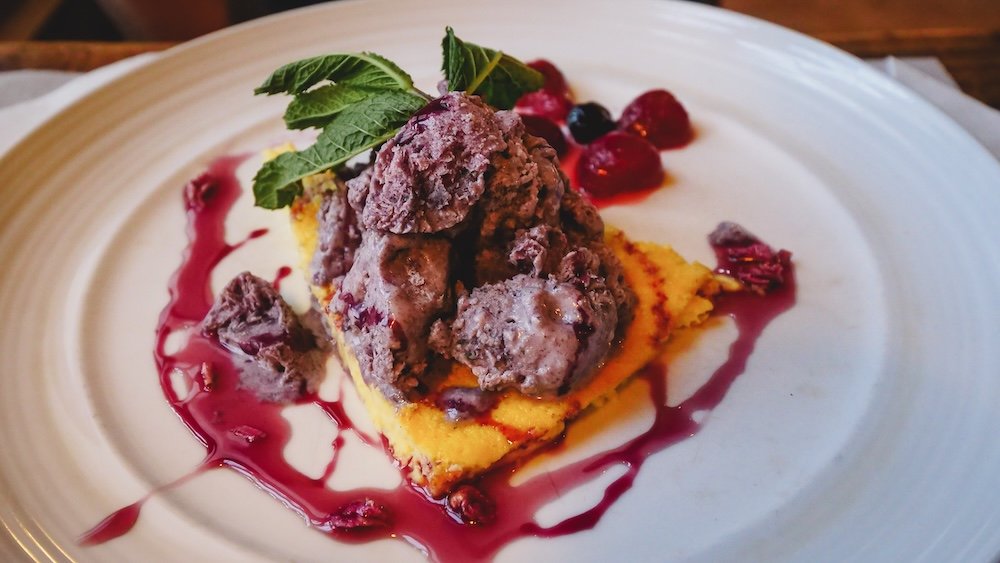
Calafate berries
Calafate berries are tiny purple berries native to southern Patagonia, and eating them is said to guarantee your return to Patagonia. Obviously, we ate them on our first trip to Patagonia, and we’ve since returned almost annually, so there may be some truth in that! They are sweet yet tart and used in jams, liqueurs, and ice creams across the region.
Pionono
Pionono is a sheet of sponge cake rolled to resemble a log shape. It is filled with dulce de leche and then sliced so that each portion looks like a roll. While the dessert version is the most popular, you can also choose to make it savoury by stuffing it with ham, cheese, veggies and some mayonnaise.
Postre Balcarce
Postre Balcarce originated in the city of Balcarce in the Province of Buenos Aires. It consists of a sponge cake layered with dulce de leche, whipped cream, meringue, praline and nuts. The exterior is then coated with cream and crumbled meringue. This is considered a bit of a fancy cake for special occasions, so you’re likely to spot it at a party or a wedding.
Chocotorta
If you want a cake, but you don’t want to bake, then the answer is chocotorta! This cake is made by taking chocolate cookies, soaking them in milk, and then placing them in a tray with layers of dulce de leche and cream cheese in between. The whole thing then goes in the fridge, and you’ve got a super easy dessert kids love at birthday parties.

Ensalada de Frutas
Ensalada de frutas is a refreshing mix of seasonal fruits, and it is served chilled with a splash of orange juice and Sprite. It’s a light dish to finish Argentina’s famously heavy meals, and it’s especially popular in summer.
Chajá
Chajá is a sponge cake dessert with meringue and peaches, and while it’s technically from our Uruguayan neighbours, it also makes an appearance in Argentine cuisine. It’s light, fluffy and refreshing.
Drinks to Try in Argentina
Last, but not least, let’s talk about drinks! There is a lot to try from herbal infusions to medicinal liqueurs, and wines to craft beers!
Mate
Mate is a herbal infusion that’s served in a gourd and drunk with a metal straw known as a bombilla. Learning to drink mate is a cultural initiation and a crucial part of any trip to Argentina! Don’t be surprised if your tour guide offers you mate! It is a drink that is meant to be shared among friends. You can also buy mate cocido in tea bags, if you want to enjoy the taste without the ceremonial preparation. Don’t forget to buy a mate gourd, bombilla and pack of yerba mate to take home as one of your many Argentina souvenirs.
Sidra
Sidra is a sparkling cider made with fermented apple juice. It is typically enjoyed during the holidays, so if you’re spending Christmas or New Year’s Eve in Argentina, you’ll toast with cider at midnight! Sidra Real is a classic, and it brings back lots of memories of late summer nights filled with festivities.
Fernet con Coca
Fernet is a bitter liqueur of Italian origin made with various medicinal herbs. It is typically served as a digestif, and in Córdoba, they love to serve it with Coca-Cola, also known as fernet con coca or Fernandito! Because fernet is an acquired taste, it’s made more palatable by the addition of Coke, so it’s a good way to try it for the first time.
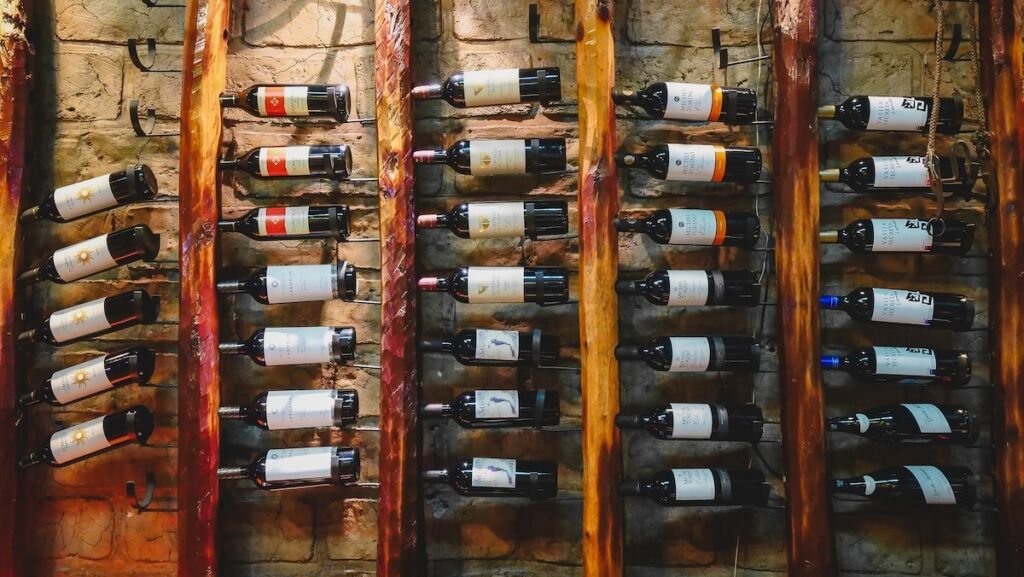
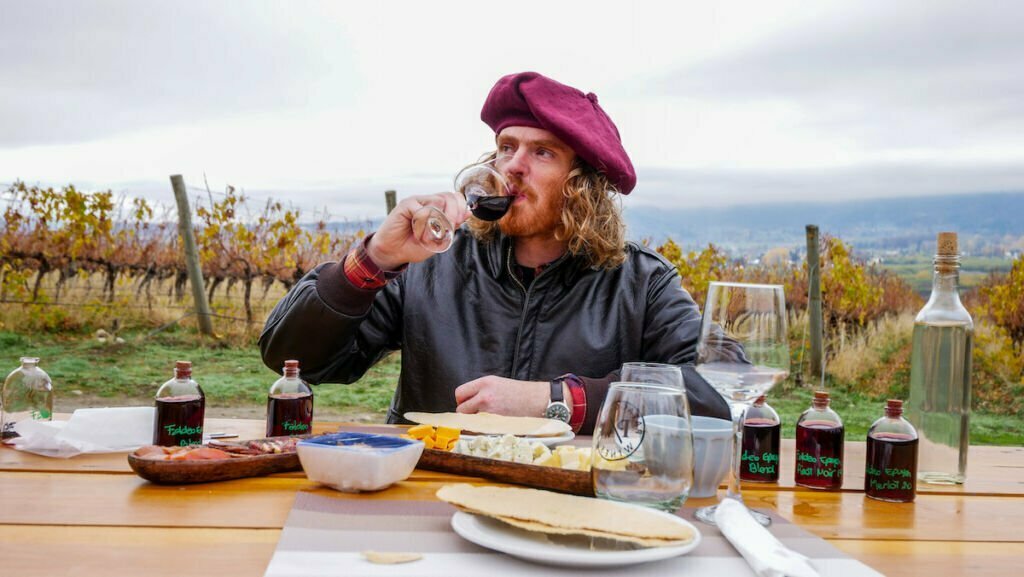
Vino
Argentina is one of the world’s top wine producers, so of course you’ll want to sample the wines! Each region is known for different grape varietals. I recommend trying Malbec in Mendoza, Torrontés in Cafayate, and Pinot Noir in Patagonia. If you only have time for one region, fly down to Mendoza, stay at one of the wine hotels, and spend your day vineyard hopping.
Submarino
The name submarino translates to ‘submarine’ and it’s a favourite with kids. I remember wanting to have this drink as a child growing up in Argentina! It basically consists of a chocolate bar that is dropped into a glass of hot milk, melting slowly as you stir it around your cup. It’s especially popular during the cooler winter months.

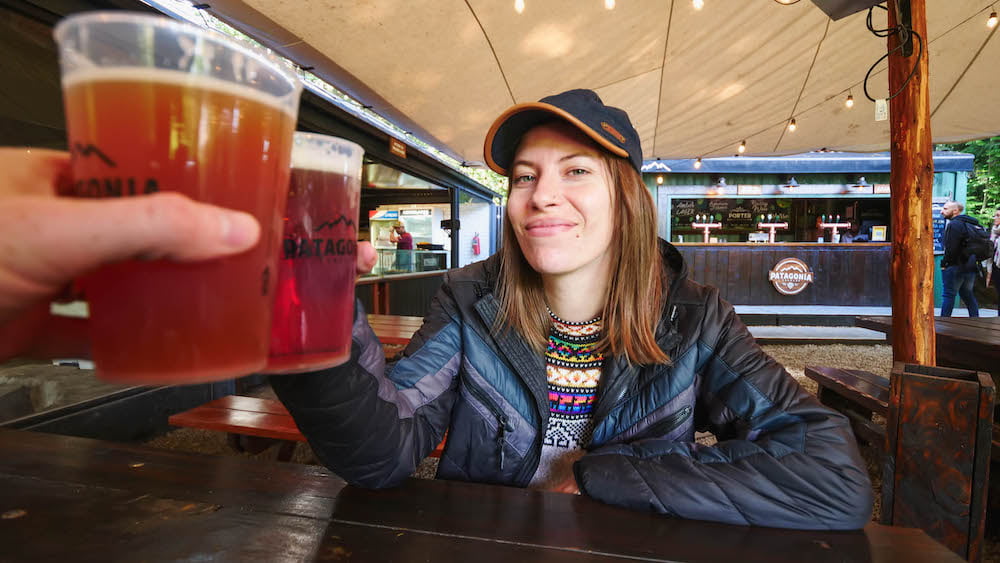
Cerveza artesanal
If you’re planning to travel around Patagonia, you’re going to discover that this part of Argentina loves its craft beer! The cool climate is great for growing hops, so that means lots of breweries, especially in and around Bariloche. You’ll find everything from Porter to Pilsen and Lager to IPA. I like their raspberry beer, so that’s one to try if you want to go for something fruity.
Licor de dulce de leche
You can buy all sorts of licores or liqueurs in Argentina, and one of the most popular flavours is dulce de leche. This is typically found in artisanal souvenir shops, and it’s something that I tend to stock up on for gifts. Other flavours to look out for include coffee, chocolate, white chocolate, raspberries, and cherry, to name a few.
